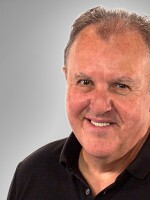ALLENTOWN, Pa. — To the employees at PPL Electric Utilities, silence is golden.
Phones are napping. All customers are receiving power.
No calls from angry folks wondering about that half-cooked dinner for eight cooling in the oven. No complaints about that damp blouse in the quiet dryer the lady of the house planned to wear to the theater that evening.
At PPL, silence screams satisfaction. Customers’ lights are on, smartphones are working, computers and laptops are humming and major home appliances are operating as intended.
“We’ve implemented many system improvements we’re undertaking to drive customer reliability."PPL Electric Utilities President Christine Martin
Then in a small room in the massive facility that is the PPL operations nerve center, the silence is broken by a screaming alarm and flashing lights on multiple computer screens.
A violent rainstorm or howling wind has caused a power outage.
And often almost as quickly, power is restored remotely by a technology called FISR, or Fault Isolation and System Restoration.
FISR analyzes outage events and develops restoration plans.
Rather quickly, dinner is served and clothes are dry.
Implemented by PPL in 2014, FISR is among many ways the company and its 1,700 employees continue to provide its 1.5 million customers with service.
During a tour of the operations facility on Wednesday morning, PPL personnel imparted the strategies and improvements that make its power grid stronger, smarter and more resilient to better withstand severe weather.
“We’ve implemented many system improvements we’re undertaking to drive customer reliability,” PPL Electric Utilities President Christine Martin said.
“Tree trimming is one, as trees are the number one cause of outages in our system. We have definitely experienced … increasing frequency of storm events, which stress our system.”
Preventing power interruptions
PPL’s commitment to tree trimming, or vegetation management, accounted for a 14% reduction in tree-related outages and a 30% decrease in storm-related outages, the utility said.
In 2024, PPL said, it trimmed trees along more than 5,000 miles of power lines across its 29-county service territory and removed more than 13,000 trees identified as having the potential to cause outages.
“We’ve also replaced equipment, expanded our grid automation and identified technologies that can better predict outages. Since 2014, we’ve avoided three million outages thanks to smart grid technology.”PPL Electric Utilities President Christine Martin
“We’ve also replaced equipment, expanded our grid automation and identified technologies that can better predict outages,” Martin said.
“Since 2014, we’ve avoided three million outages thanks to smart grid technology.”
Contributing to uninterrupted electrical service is PPL’s installation of Early Fault Detection sensors on utility poles that detect developing problems on the system before an outage begins.
Another strategy is deploying helicopters and drones to inspect transmission and distribution lines for issues not visible from the ground.
From 2025 to 2028, PPL will invest nearly $6 billion in infrastructure improvements that will reduce both the number and length of outages while supporting growth and development within Eastern and Central Pennsylvania.
'Biggest challenge: Changing weather'
A walk through PPL’s facility is reminiscent of NORAD, or North American Aerospace Defense Command, which is responsible for protecting the United States and Canada from air attacks.
Each large room features banks of video screens operated 24/7 by trained representatives fielding calls and concerns from customers about power outages throughout its six regions.
PPL Vice President of Field Operations Ed Haraker stands before eight large video panels in the PPL Emergency Control Center.
"People ask what the biggest challenge is — it’s the changing weather.”PPL Vice President of Field Operations Ed Haraker
Displayed are weather maps of the company’s service areas and a list of areas where outages have occurred and to what degree.
Before him are tables with banks of computers that would be manned by employees during a storm or outage.
“The smart grid works to simulate rerouting power and reducing the number of customers affected until the more difficult repairs can be made,” Haraker said.
“We also look at priorities for restoring power, such as 911 centers, hospitals and municipal utilities. We look at all the factors.
“People ask what the biggest challenge is — it’s the changing weather.”
To report or check on power outages, go to PPL's outages and issues web page.


